 Paul Lowe 19th Jan 2012
Paul Lowe 19th Jan 2012
Seaweed, humic, fulvic acid, molasses and organics are all biostimulants, but what biology are you stimulating? What biology do you desire? And how can you ensure you are creating the biology for your needs? In this article, I will explain the functions of different microorganisms, how the ‘soil food web’ works, how this can be encouraged, how you can ensure biology is present and how to get the best out of your soil by utilising soil biology.
Simple! Well not really, the living ecosystem below our feet, the biology and the heart of healthy soil is a complex subject. Add this to what we do to create a great playing surface and the subject gets even more complicated. Soil has an incredible diversity of organisms, this makes up the soil food web. They range in size from the tiniest one-celled bacteria, fungi and protozoa, to the more complex nematodes and micro-arthropods, to the visible earthworms, insects, small vertebrates. These organisms eat, grow, reproduce and move through the soil. They decompose organic matter (thatch, humus, dead organisms) creating food for the plant. They use nitrogen and other nutrients, that might otherwise enter groundwater, and give the nutrients back to the plant. Many organisms protect the plant from pathogens and other soil organisms that prey on our much loved pitches and greens.
Compost tea is fast becoming the backbone of many a greenkeeper’s management programme, with the intention geared towards reduced chemical and fertiliser inputs, and species conversion towards the fine bent/fescue swards. It’s the simplest and most cost effective way of introducing life into the soil. This biological soup is teeming with diverse life, all eating and reproducing. Living the dream!
However, some will argue that compost tea is unnecessary, and all that is needed is to use a quality stimulant.
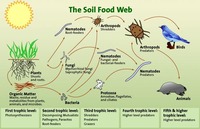 If you have a quality compost tea and back this up with a quality biostimulant … bingo, you have the perfect combination. Introducing the right biology and stimulating the right biology. By introducing the diverse biology into the soil you have a guarantee, you are also able to redress the balance when chemicals, salt fertilisers etc. are applied.
If you have a quality compost tea and back this up with a quality biostimulant … bingo, you have the perfect combination. Introducing the right biology and stimulating the right biology. By introducing the diverse biology into the soil you have a guarantee, you are also able to redress the balance when chemicals, salt fertilisers etc. are applied.
In healthy soils, there are four main microorganisms that affect our soil and plants: bacteria, fungi, protozoa and nematodes. They all have a job to do; they are interlinked in many ways and all rely on each other. They have a symbiotic relationship with the plants, providing food and protection. They provide competitive exclusion towards other pathogens; after all, most pathogens are opportunist, and beneficial microbes will restrict that opportunity. They will eat organic matter, turning this to available nutrients for the plant. They will even eat each other and turn this into available food for the plant. They will be breeding in a microscopic orgy of lust. They will be moving through the soil searching for food and lovers, creating air spaces for roots and air to move into, making soil aerobic and friable.
So, let’s look at the soils that host the biology. Firstly, soil needs to be aerobic to harbour healthy soil biology. If the soil smells – contains anaerobic blacklayer – then this needs to be addressed. This is Mother Nature’s way of telling you that the soil is biologically poor. And, if our soils are biologically poor, thatch will not degrade into organic matter and humus, organic nutrients will not convert into available plant food; disease pathogens will take advantage and the grass plant will suffer. So, the first port of call is to address the anaerobic problem.
I still believe in the old ways, and I believe that the way we manage our soils has a direct impact on the plants we grow. This philosophy has been tried and tested since the time we started to grow plants. The only difference now is that we have more of an understanding of our soils and, as a result, we have the soil food web.
What function do the different species undertake?
Bacteria:
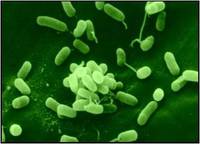 This single celled organism is a prolific reproducer. What it lacks in size it makes up for in numbers – one billion bacteria per teaspoon of healthy soil. It feeds on simple carbohydrates (sugar) and has an association with annuals, including Poa annua. Sugar-based bio-stimulants, like molasses, will feed bacteria.
This single celled organism is a prolific reproducer. What it lacks in size it makes up for in numbers – one billion bacteria per teaspoon of healthy soil. It feeds on simple carbohydrates (sugar) and has an association with annuals, including Poa annua. Sugar-based bio-stimulants, like molasses, will feed bacteria.
The Benefits/Actions of Bacteria
– Decompose simple organic matter
– Recycle, solubilise and retain nutrients in the rootzone
– Protect the plant from disease
– Produce by-products that promote plant growth (enzymes, vitamins, hormones)
– Support Poa Annua
Bacteria will reproduce at a massive rate, it’s relatively easy to produce and encourage – aeration and some simple carbohydrates will soon see them appear in abundance.
Fungi:
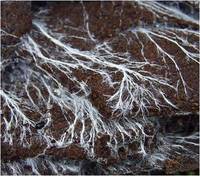 Fungi is very different. This has an association with perennial plants like Fescue Bents and Rye. Fungi prefer complex carbohydrates, like organic matter, lignin, seaweed, humic acid and fish hydrolosate. Fungi take longer to naturally recolonise than bacteria. A bit like the grass it is associated with.
Fungi is very different. This has an association with perennial plants like Fescue Bents and Rye. Fungi prefer complex carbohydrates, like organic matter, lignin, seaweed, humic acid and fish hydrolosate. Fungi take longer to naturally recolonise than bacteria. A bit like the grass it is associated with.
The Benefits/Actions of Fungi
– Decomposing thatch
– Nutrient cyclers
– Soil structure builders
– Plant protectors
– Support perennial plants
Fungi is more fragile and susceptible to chemicals and high salt fertilisers. But, once established, they have many more benefits.
Protozoa:
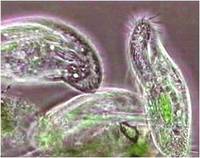 Protozoa are single-celled animals that feed primarily on bacteria, other protozoa and soluble organic matter. These play an important role in nutrient cycling, due to their fantastic appetite. One protozoa will eat 10,000+ bacteria each day, for example.
Protozoa are single-celled animals that feed primarily on bacteria, other protozoa and soluble organic matter. These play an important role in nutrient cycling, due to their fantastic appetite. One protozoa will eat 10,000+ bacteria each day, for example.
Obviously, with all the food the protozoa consume, they produce waste. This waste is excreted as NH4 (ammonium), which is then available to the plant. They are also an important food source for other soil organisms like earthworms and beneficial nematodes. So, for nutrient recycling, protozoa is king.
Nematodes:
Nematodes get a bad press, but they are, in fact, very beneficial. Nematodes are microscopic worms. Like all worms, they move through the soil making channels, eating and reproducing as they go. There are around 20,000 different species that are known, however there are four different types:
– Bacterial feeders
– Fungal feeders
– Root feeders (Parasitic)
– Nematode feeders (Predatory)
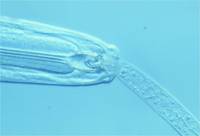 Like protozoa, nematodes play an important role in releasing nutrients in plant available form. So, why do nematodes get such bad press. This is because we have an imbalance in the soil. Root feeders are the problem, sucking all that sugary goodness out of the roots. In healthy soil you will find thousands of nematodes of all different types. However, in unhealthy soil, you will only find rootfeeders. Predatory nematodes will normally keep rootfeeders under control, they love the sugary rootfeeder, they will eat them over any other type. If the rootfeeder has no predators, it is left alone to continue chomping away at our root system
Like protozoa, nematodes play an important role in releasing nutrients in plant available form. So, why do nematodes get such bad press. This is because we have an imbalance in the soil. Root feeders are the problem, sucking all that sugary goodness out of the roots. In healthy soil you will find thousands of nematodes of all different types. However, in unhealthy soil, you will only find rootfeeders. Predatory nematodes will normally keep rootfeeders under control, they love the sugary rootfeeder, they will eat them over any other type. If the rootfeeder has no predators, it is left alone to continue chomping away at our root system
Biostimulants
So, what biology do you want to stimulate?
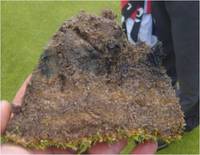 Bacteria = association with annual plants = stimulate with simple carbohydrates, molasses
Bacteria = association with annual plants = stimulate with simple carbohydrates, molasses
Fungi = association with perennial plants and grasses = stimulate with complex carbohydrates = humic, seaweed, organic matter etc.
Scientifically, we know so much more now. We know the operations and benefits of bacteria, different fungi, protozoa, nematodes etc. For me, it’s all about creating a healthy balance and a diverse ecosystem.
In the real world of greenkeeping, we need salty inorganics at times, we need chemicals, inert sand dressings/sandy soils and, of course, compaction; not great for our ecosystem! Compost tea is simply a great tool to apply biology, then we can feed the biology with the correct biostimulant, we can reduce the chemicals, salt fertilisers and aerate sensibly… then we can keep the ecosystem. Many are enjoying great success by bringing life back to the soils and working with nature.
Paul Lowe, Symbio. Email: Paul@symbio.co.uk
Read more articles in Consultancy, by Paul Lowe or from January 2012.
